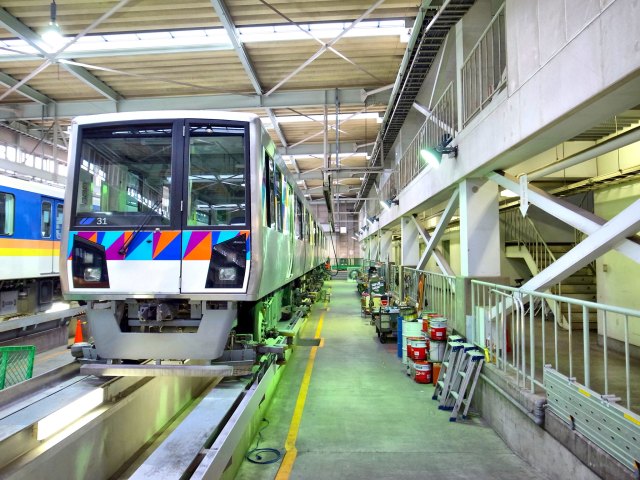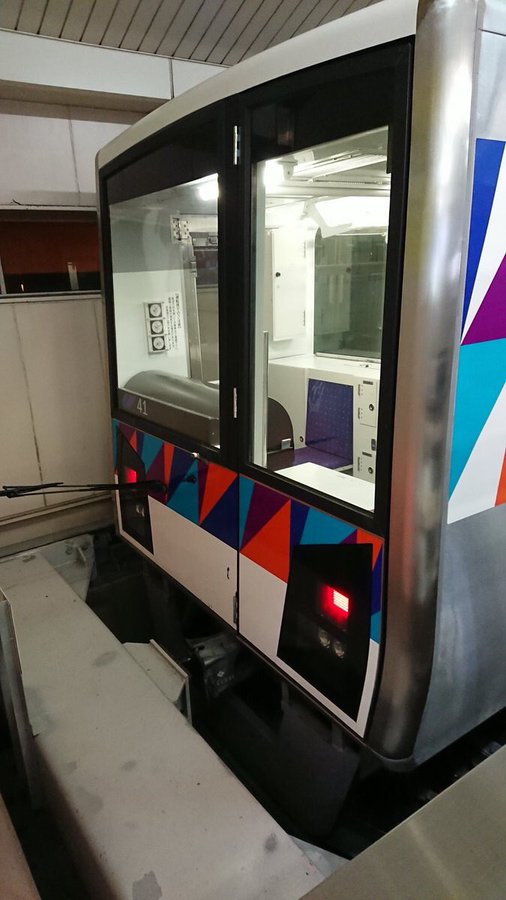Japan got a dose of software failure on one of its driverless train recently when an automated train suddenly started moving in the wrong direction and only stopped when it hit a buffer post after travelling approximately 25 metres (82 feet). The incident left a number of commuters with head wounds and serious injuries as the train was travelling at approximately six kilometres (3.7 miles) per hour when it hit the buffer post.
The five-car driverless train operated by Yokohama Seaside Line Co. had departed Yokohama’s Shin-Sugita Station at 8:15 p.m. for Namiki Chuo Station on the Kanazawa Seaside Line in Kanagawa Prefecture. The train reportedly stopped abruptly after leaving the station and then started reversing until it hit a buffer post. The impact injured approximately 14 of the 30 passengers who were on board at the time. Some suffered serious but non-life threatening wounds after they were thrown out of seats and hit their heads against handrails. Emergency services got to the scene within a few minutes and were able to treat victims at the station, while 15 of the injured were transported to the hospital. About 6 of the injured persons taken to the hospital for treatment were said to have serious injuries, including bone fractures.
The cause of the sudden change in direction is yet to be determined but train services have been stopped on the affected line as safety checks are being conducted and an investigation is ongoing by the Japanese National Transportation Safety Board. However, Yokohama Seaside Line Co. president Akihiko Mikami believes the incident may have occurred due to a glitch in the self-driving train’s operating system. The company is reportedly working towards determining the exact cause of the accident.
EDITOR’S PICK: Survey reveals China has more persons looking to adopt self-driving cars than the US
The Kanazawa Seaside Line is an 11-kilometre long automated guideway transit line that runs between Shin-Sugita and Kanazawa Hakkei Station. The self-driving trains and their speed are operated by an automatic train operation system (ATO), while the brakes are operated by an automatic train control (ATC) system. Staff monitor the operations from the headquarters at the Kanazawa Hakkei Station terminus. As at the time of the accident, three people were reported to be monitoring the train but none of them was able to notice the train had reversed until the emergency stop was activated by the collision. The company says this is the first incident of its kind to occur on the line since it first opened in 1989.

This brings to mind the stiff competition to ring automation to vehicle operations, a move spearheaded by Google, Uber and other start-ups. Autonomous vehicles are still under testing in some cities especially in developed countries like the US, Germany, China, Japan etc. The first recorded accident by a driverless car was that of Uber’s self-driving Volvo which hit a cyclist in Arizona last year. The incident was the first-ever pedestrian fatality involving a self-driving car and it brought to the fore the dangers inherent in deploying software to man vehicles. Investigations showed the car could not make out what the object in front was before the collision and even at that, the emergency brakes were disabled by Uber to avoid erratic responses. The driver on the wheels who was supposed to deploy the brake in an emergency only did that after the car had hit the lady fatally. Automated trains are easier to operate and have been in existence for decades but still, we hear of software failures. With the difficulties and complications associated with road transport, we wonder how easy it would be to develop a seamless system that won’t pose safety concerns.
UP NEXT: Mi Band 4 is all set to launch on June 11 in China
(source)




